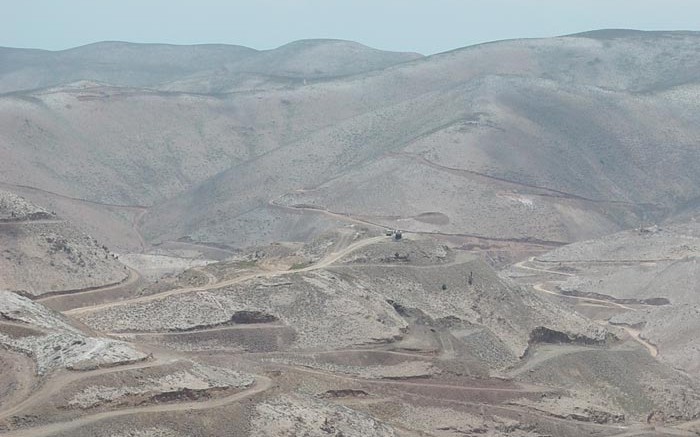In the latest drama unfolding at Southern Copper’s (NYSE: SCCO) embattled Tia Maria project in Peru, the company has dismissed allegations that a lawyer, who used to work for the company, tried to bribe protestors on behalf of the company.
In a Form 8-K filed May 12 with the U.S. Securities and Exchange Commission, the Peruvian branch of Southern Copper stated that it “rejected the allegations by a TV station alleging that significant sums of money were offered to the leaders of the protest to end the current disturbances” at the US$1.4-billion project.
“The branch clarified that the alleged offer was made by a third party with no authority to represent the branch,” the statement read. The branch also denied “taking any part in any illegal activity or improper conduct.”
Demonstrations calling for the project’s cancellation have left three people dead and more than 200 injured since the protests began in March, according to reports from international news agencies.
On May 9, the government sent its armed forces to the region in the southern province of Islay to help keep law and order, authorizing them to assist local police.
Opponents in the long-running dispute claim the mine will pollute key waterways in Arequipa and damage agriculture.
According to the most recent local press reports, several groups in opposition to Tia Maria have called for a 48-hour regional strike. “Unless the company can find strong local support, this is strong evidence the project will advance slowly, if at all,” senior investment strategist at Casey Research Louis James says, who has evaluated mines and mining projects in Peru and around the world for more than a decade.
Victor Pedraglio, Southern Copper’s Phoenix, Ariz.-based financial planning manager, declined to speak on the record about the protests for this article.
The company — in which Mexico City-based Grupo Mexico owns 85.1% — expects the Tia Maria project will produce 120,000 tonnes of copper cathodes annually over a 20-year mine life.
In its corporate literature, the company says it will use the highest environmental standards.
Peru’s Energy and Mines Ministry approved Southern Copper’s environmental impact assessment in August 2014. The company is now awaiting a construction permit.
In April, CEO Oscar Gonzalez Rocha told a Reuters reporter at the CRU Copper conference that the mine would go into production by the end of 2017, or the beginning of 2018.
The company says the project will generate 3,500 jobs during the construction phase. Once in operation, the mine will directly employ 600 workers and create another 2,000 indirect jobs.
Southern Copper, one of the largest integrated copper producers in the world, said the Peruvian government has been “promoting the creation of a development dialogue round table for the resolution” of concerns about the project. It also said that completing the Tia Maria project “represents the regaining of trust of the mining investor community.”
Casey Research’s James notes that “local politics trumps everything in a jurisdiction like Peru.”
He says in an interview that “there are areas that are very pro-mining. Companies have operated there for decades without trouble. The locals get it, they’re happy with the jobs, so there are no problems. In Arequipa, there’s been so much controversy that it’s easy to stir up emotions in that area. And yet, Fortuna Silver Mines has operated its Calloma mine near Arequipa with great local support.”
The real question, James says, is whether the people protesting against the Tia Maria project are locals who live in the area, or are outsiders sent by special interests to create an impression. “Is there really genuine local opposition to this project? Or is it imported busloads of people, paid for by anti-mining groups, as I’ve seen in some cases? If there’s a local constituency that wants to see the project go forward, there’s hope.”
“I have been to places where NGOs have told the locals that even simple exploration drilling will poison the water and their farm animals will die,” he continues. “I’ve seen evidence that it’s not just environmentalists, but there is a bigger social issue in terms of wages.”
The analyst explains that when mining projects pay higher wages — usually double or triple the average local wage — farmers and ranchers find it difficult to recruit workers at lower pay levels. “They can’t afford the wages that the mines pay. Some resort to spreading stories about how mining would be bad for the community, and some give money to fund protests,” he explains. “If I was on the ground at Tia Maria, I would want to know whether there is a local agricultural union, co-op or similar group that’s involved, because if they are, the problem is not going away.”
At a federal level, James notes that Peru’s new mining minister supports responsible mining and points to a slew of recent permit approvals, including for the Tia Maria project, as well as for less controversial projects such as Tahoe Resources’ (TSX: THO; NYSE: TAHO) Shahuindo gold project and Dynacor Gold Mines’ (TSX: DNG; US-OTC: DNGDF) new Chala processing plant.
“The government is actually doing the right things, not just saying the right things, and that’s really positive.”


Be the first to comment on "Southern Copper rejects bribery accusations"